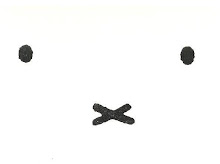Day 5 (continued): Auchwitz I, Auchwitz II-Birkenau concentration camps
I've been aware of the Holocaust ever since elementary school... but the text, the images, the numbers, never really stirred up any deep empathy or understanding. There's always been a generational, geographical, cultural barrier, and all of these crimes just seemed too horrific to be real. Well, after this trip to the Auchwitz concentration camps, I'll never ever feel the same. It WAS real, yet still surreal... completely unimaginable that humans could easily kill millions of other humans for the most mind-boggling reasons.
"Arbeit Macht Frei"
Work makes one free.
The "B" is inverted here on the Auchwitz gate, which many speculate was made by political prisoners to warn others about the true nature of the concentration camps.
Over one million people died in Auchwitz, most of them Jews, but also Poles, Soviets, gypsies, and those of other nationalities. Most people were executed within 2-3 hours of arriving to Auchwitz via being corralled on train. All the elderly, young, and most women (pregnant, mothers) were sent to the gas chambers right away. After they locked the doors and gassed their victims, the Nazis then pillaged the bodies by pulling out gold teeth and shaving off all their hair. All those who arrived on Auchwitz had their heads shaved, which were packaged and processed to be made into industrial fabric for bedding, tents, and clothes. I saw with my very own eyes rolls of this fabric... which if you looked closely had strands of hair sticking out on the side.
There were several galleries where the Auchwitz museum displayed a countless number of personal effects. There was a room full of childrens' shoes. Mounds of luggage. Piles of toothbrushes. A case-full of glasses. Each of these belonged to A PERSON. These belongings not only represented an individual, but a false hope of a new beginning... which was lie the Nazis freely employed. I didn't take any photos of these items out of respect to the victims, and because I didn't want to bring back these "digital souvenirs" back with me.
One of the "Living Barracks" in Auchwitz-Birkenau.
Even if you made it through the initial selection process, being alive in Auchwitz was often worse that dying immediately in the gas chamber.
I felt physically ill being in Auchwitz, a strange burdened sensation. I went into the gas chambers, the cremation rooms, the living barracks. I saw the firing block, the isolation cells, the sentry towers. Even though I saw all this, I still can't really believe that it happened.
Auchwitz II-Birkenau.
On a final note, I would like to convey to all my fellow travelers an very important rule to keep while visiting foreign places: ALWAYS maintain a level of respect for the locals and their culture/history. I saw four tourists from Hong Kong who decided that it would be fun to take their ultra lens professional cameras and do an impromptu photo shoot at the barbed wire in the Birkenau concentration camp. The girl wrapped a scarf around her head and then peered "pensively" through the fence. WHAT... THE FUCK. YOU CANNOT EMULATE A CONCENTRATION CAMP VICTIM, BITCH. THIS IS NOT YOUR ANNUAL SCHOOL FIELD TRIP. I hate to use foul language on a public blog, and it's my fault for being unable to find the right words to adequately convey my rage and embarrassment (being a person of Chinese descent myself). I should have gone over and explained to them that this is a place of suffering and remembrance, a graveyard. How would they feel if people pretended to be slaughtered at the Rape of Nanjing Museum?? Ignorant idiots, you make me sick with your insensitivity.
Okay, with that rant out of the way, I would like to disclose that I had the honor of meeting a Holocaust survivor in my tour group, who shared her story with me (when we were chatting in the hot tub in Budapest). It was her first time back in Poland since she fled her home at the age of 8. She disclosed to me how her father fought for the Polish army, how she moved from town to town, how her family hid in the woods for 10 days without food or shelter when the Nazis raided their village (and her grandfather was executed by firing squad immediately). She told me how her mother knew short-hand German and got the entire family fake papers, and managed to get her aunt and uncle out of the Warsaw Jewish Ghetto when her mother got wind that it was going to be liquidated (and all of their inhabitants sent to the concentration camp). She told me how she had to memorize her fake name, her parents fake name, a fake history. Her family made fake backs for their closets so they could hide their relatives. The policemen inspected houses very often, and her parents hid rocks in the house in case they were discovered... this was so they could all attack (and all die) together. Finally, even after the Soviets took over Poland, her parents had the foresight to be amongst the first to seek asylum and go to America. I am so grateful that she shared her history with me, not only because I know that it was difficult for her to visit Poland, but also because her story again solidified the significance of the places that I was seeing. Thank you, Eva.












0 comments:
Post a Comment